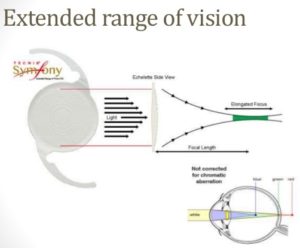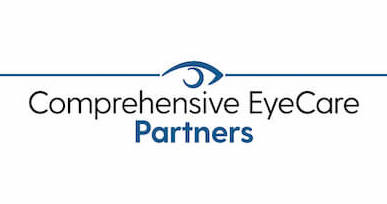Cataract surgery is the most-performed operation in patients over 65 years of age in the United States. In the first part of this two-part blog post about cataract surgery, the central focus was on the history of cataract surgery, and the changes that have taken place within the last eight decades.But another large part of the evolution of cataract surgery is centered on the technological advancements of intraocular lenses (IOLs).
Cataract patients in the early twentieth century could only hope to have decent vision from very thick glasses following the complete removal of the natural lens of the eye. But outcomes began to change around 1950 when cataract patients began receiving intraocular lenses to replace the old, cataract lens. While patients were receiving better vision post-surgery, it was still an imprecise science until ultrasound technology allowed for eye measurements that would help doctors more accurately choose the lens that would bring the best vision possible to the patient.
Nothing Wrong with a Monofocal Lens
These first lenses were monofocal lenses, meaning the implanted lens would deliver improved vision for only ONE focal point, near, intermediate or distance vision. This lens is still used today, and is the only lens that is fully-covered by medical insurance companies for the use in cataract surgery. A monofocal lens can often get a bad rap, for its’ basic nature. However, if budget is a concern, or the patient doesn’t really mind having to wear glasses following surgery, a monofocal lens is a great option.
Premium IOLs Can Enhance Visual Outcomes
In addition to monofocal lenses there is a category of lenses called premium IOLs. These lenses aim to provide better visual outcomes including correcting astigmatism while also providing multiple focal points or an extended range of vision. A toric IOL has the ability to neutralize astigmatism. When the cornea is not completely round, which is the case when a person has an astigmatism, light entering the eye bends and may make vision distorted. As the name implies, multi-focal IOLs provide multiple visual focal points. Whether that’s near, intermediate, or distance vision, visual improvements are seen at set points. However, the new segment of IOLs called “extended range of vision” aim to deliver vision across a focal range and not just set points.
New Lens Brings Even More Visual Options
One such lens is the new Tecnis Symfony and Tecnis Symfony Toric lenses that aim to provide even better visual outcomes for patients. Those benefits include: sharper vision, smoother transition between near, intermediate and distance vision, and low visual complaints (i.e. lights or halos) following surgery, when compared to multifocal lenses. The real upside for a patient choosing such a lens is a greater chance of having more youthful vision restored.
If you are interested in being able to achieve more youthful vision as an added benefit with cataract surgery, ask your doctor if you’re a candidate for a multi-focal or extended range of vision lens. You can also submit an inquery to us by following this link: Cataract Self Test



